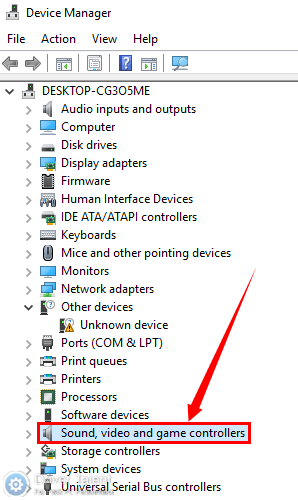
- #Audio device on high definition audio bus xp install#
- #Audio device on high definition audio bus xp drivers#
- #Audio device on high definition audio bus xp download#
- #Audio device on high definition audio bus xp windows#
scottgus1 Site Moderator Posts: 14912 Joined: 30.
#Audio device on high definition audio bus xp drivers#
If you do decide to change the recipe and something stops working in the guest, there may be drivers available, but you'll have to hunt for them.
#Audio device on high definition audio bus xp download#
Since all the defaults are driven by what works best in the OS your guest will use, it is important to match the Type and Version settings (#2) for the guest as closely as possible to the OS you plan to install, so the best hardware for the guest will be chosen.Īnd, regarding #3, the right drivers for the default settings are already present in the guest OS so you shouldn't have to download anything if you haven't changed from the default guest recipe. Best to leave the default settings in most cases. So, changing the sound card settings in the Virtualbox guest settings can affect your ability to get what you want out of the sound coming from your guest if your OS doesn't have the best or correct drivers for the chosen sound card. And only the emulated hardware's capabilities will be usable in the guest, not the physical hardware's capabilities. Thus, the guest will see the emulated hardware, not the physical hardware, as Perry said. The VB devs then set the default "recipe" for that OS to include the hardware that best matches the drivers that the OS comes with.
#Audio device on high definition audio bus xp install#
When the Virtualbox developers decide to support an operating system they take a look at what drivers are built-in-to the operating system and choose an emulated sound card, etc., to present to the guest that will be recognized by the OS in the guest and have drivers installed automatically and start working automatically without your needing to install anything.
#Audio device on high definition audio bus xp windows#
Sound actually works in the Windows guest, but I'd like a more optimal experience with the proper and updated driver.Įach operating system usually carries with it basic drivers to allow the OS to communicate with common hardware found in most computers. I thought perhaps PCI Audio was just passed through, but apparently not.Ģ) Does it depend on the " VM Settings > General > Basic > Type | Version"?ģ) What are the right drivers to use in the Linux and Windows guests? (I can't find any of those drivers on their respective websites.)

Memory at f0804000 (32-bit, non-prefetchable)Ĭapabilities: Power Management version 2Ĭode: Select all Expand view Collapse view Audio Controller Hardware ID: PCI\VEN_8086&DEV_2668&SUBSYS_76808384&REV_01Īudio Codec Hardware ID: HDAUDIO\FUNC_04&VEN_0000&DEV_0000&SUBSYS_00000000Īfter reading another post about video ram and RTFM (Chap. However, VirtualBox detects this Codec Hardware in the VMs, as the completely different device: SigmaTel STAC9221 HD Audio Codec Ĭode: Select all Expand view Collapse view #lspci -b -nn -vĠ0:05.0 Audio device : Intel Corporation 82801FB/FBM/FR/FW/FRW (ICH6 Family) High Definition Audio Controller (rev 01)įlags: bus master, fast devsel, latency 64, IRQ 11 Which according to the PCI ID site is a: Realtek ALC668 This is my setup:Ĭode: Select all Expand view Collapse view Hardware: ASUS N550JKĪudio Adapter: Intel Lynx Point PCH - High Definition Audio Controller Vendor:Device/8086:8C20Īudio Codec: Realtek High Definition Audio (Realtek ALC668) Vendor:Device/10EC:0668Ĭode: Select all Expand view Collapse view Audio Adapter: Intel Lynx Point PCH - High Definition Audio Controller Īudio Controller Hardware ID: PCI\VEN_8086&DEV_8C20&SUBSYS_11CD1043&REV_05Īudio Codec Hardware ID: HDAUDIO\FUNC_01&VEN_10EC&DEV_0668&SUBSYS_00000000ĭeviceInstanceId: HDAUDIO\FUNC_01&VEN_10EC&DEV_0668&SUBSYS_104311CD&REV_1000\4&6BFDCFC&0&0001

Thus I don't have Audio when using the Guest OS in that mode. The problem is that my host is using an "Intel HD Audio" PCI device, but showing a completely different Audio device on my VM OS.

I'm trying to understand the mechanism used by VB to enumerate the hosts physical Audio device(s) on the guest VM.


 0 kommentar(er)
0 kommentar(er)
